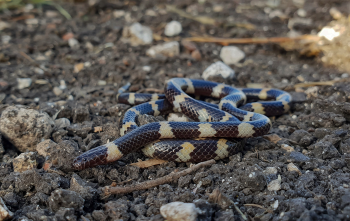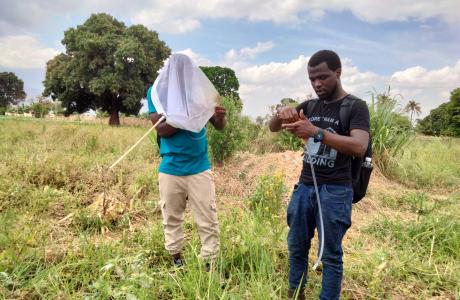Scientists discover new family of snakes
An international team of researchers led by the University of Helsinki has revised the phylogeny of the Elapoidea, an important group of snakes. By doing so, they discovered a new family of snakes. The study was carried out in collaboration with researchers from the AfricaMuseum and the Royal Belgian Institute of Natural Sciences and was based on specimens from both museums.

Müller's ground viper (Micrelaps muelleri), a venomous snake from the Near East, is a member of the newly described family Micrelapidae. Photo credit: Simon Jamison
A superfamily of snakes with a complex genealogy
The superfamily Elapoidea includes several families of snakes, with over 700 species worldwide. Cobras and mambas are probably the most famous representatives of this superfamily.
The Elapoidea appeared about 50 to 45 million years ago. This extremely diverse group of snakes is a classic example of evolutionary radiation, whereby a large number of species appear in a short period of time.
The phylogenetic classification of these groups, i.e. the relationships between the different species, is classically very difficult to establish. The same was true for the Elapoidea.
Until now.
A record number of genes and a new family
By analysing data on more than 4600 genes, an international team of researchers has successfully solved the phylogeny of the Elapoidea.
‘Such a dataset allows us to establish relationships with great precision’, explains Jonathan Brecko, a researcher at AfricaMuseum and the Royal Belgian Institute of Natural Sciences, who participated in the study. ‘By comparison, most datasets used in molecular phylogeny only take into account about 10 genes.’
Within the Elapoidea, the researchers also discovered an entirely new family of snakes, the Micrelapidae. This new family includes four species of snakes, all of which live in East and North-East Africa and the Near East.
‘The discovery of a new family is an extremely rare event in vertebrates’, explains Jonathan Brecko.

How old museum collections are used for cutting-edge research
In addition to the genetic data, the researchers also used nanoCT and microCT scans.
‘We used the scanners of the Royal Belgian Institute of Natural Sciences for this’, explains Jonathan Brecko, who carried out the scans of the specimens.
‘After scanning the skull of a specimen, the bones that make it up can be virtually isolated and studied one by one. This allows us to compare morphological characteristics between specimens more accurately.’
The AfricaMuseum holds about 17,000 snakes in its collections. The Royal Belgian Institute of Natural Sciences houses about 20,000.
‘These specimens, some of which are more than 100 years old, continue to yield secrets to science and their conservation is therefore crucial for research’, concludes the young researcher.
The study was published in the scientific journal Molecular Phylogenetics and Evolution:
Das, S., Greenbaum, E., Bauer, A. M., Meiri, S., Burbrink, F. T., Raxworthy, C. J., Weinell, J. L., Brown, R. M., Brecko, J., Pauwels, O. S. G., Rabibisoa, N., Raselimanana, A. P., & Merilä, J. (2023). Ultraconserved elements-based phylogenomic systematics of the snake superfamily Elapoidea, with the description of a new Afro-Asian family. Molecular Phylogenetics and Evolution, 180. https://doi.org/10.1016/j.ympev.2022.107700


